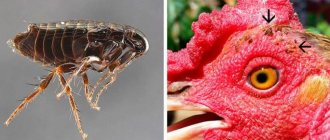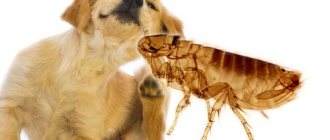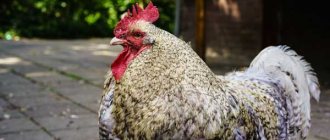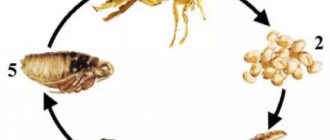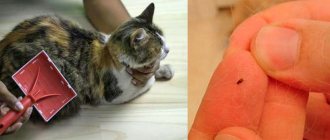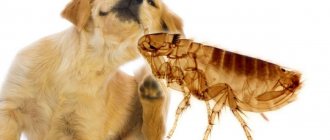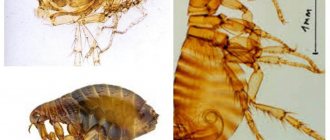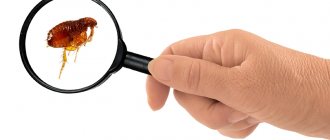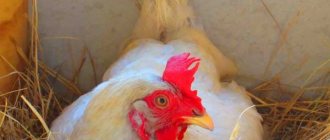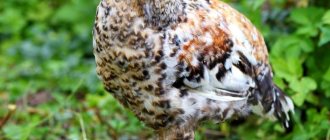Fleas in dogs are ectoparasites that most often affect domestic animals. No pet is immune from this parasitic disease, so every dog owner should know the main symptoms of the pathology, how to remove fleas from a dog and preventive measures. Flea bites cause pain to pets, the saliva of ectoparasites causes allergies, causes dermatitis, ulcers, abscesses and is a breeding ground for many serious infectious diseases. Another danger is that these small blood-sucking insects carry helminth eggs.
Causes of fleas in dogs
To reduce the risk of flea infestation, dog owners need to know where danger awaits their pets.
So, how can a dog become infected:
- Through direct contact with a sick animal.
- Being in a place where an infected animal passed. This could be an apartment, an entrance, an elevator, public transport.
- Through poultry droppings.
- On the hunt, tearing open the burrows of wild animals or destroying bird nests.
- On a walk. Fleas and their larvae can be found in grass, fallen leaves, garbage, soil, on plant stems, and on park paths. Adult bloodsuckers quickly jump, landing on the fur of the victim.
- Flea eggs can be brought into the house by dog owners and their guests on outdoor shoes and clothes.
- Puppies are at risk of infection from a sick mother.
Secondary infection is possible from the dog’s bedding and sleeping area, floor coverings and upholstery of upholstered furniture. Flea larvae may remain in all these places, so during treatment of the dog, the bedding must be completely replaced, and its habitat, carpets and furniture must be treated with special compounds.
How dangerous are bloodsuckers?
Bloodsuckers can cause a number of diseases and complications. To minimize the risk, they need to be eliminated quickly. They should also be feared because:
Bloodsuckers can cause a number of diseases and complications
- they carry a large number of diseases, even fatal cases occur;
- due to the fact that babies do not have enough red blood cells, a large number of insects causes anemia;
- due to the saliva of parasites, allergies appear (itching, redness, other symptoms);
- bites lead to infection or dermatitis;
- blood-sucking insects are carriers of helminths.
Fleas are especially dangerous in a puppy under 1 month of age, since the baby does not yet have the proper immunity. There is a high risk of complications of the disease, sometimes leading to death.
Advertising:
Symptoms indicating a dog infection
In order to start treatment on time and get rid of the “infection” you have caught, you need to know how to understand that a dog has fleas. Regular inspection and combing of the animal's fur is your reliable assistant. Run a comb or hand against the fur; the white eggs of parasites are visible to the naked eye. You may also notice dark brown grains - this is insect waste.
When fleas have multiplied sufficiently on the animal's body, they become visible. Every dog breeder should know what fleas look like on a dog. These are agile brown insects that quickly hide in the undercoat. Parasites are afraid of water, so they can be easily seen while bathing a dog.
In addition to a visual examination of the pet, the presence of “bloodsuckers” is indicated by the following symptoms:
- The dog itches and does it continuously.
- The animal suddenly jumps up and tries to bite itself.
- Red spots of unknown etiology appear on the dog's skin.
- Bald patches, sores and scratches form on the dog's body.
- The animal whines pitifully for some unknown reason.
- The dog begins to shed prematurely.
- The pet becomes restless and irritable, loses appetite, and suffers from insomnia.
- A sharp decrease in the animal’s weight with proper feeding.
Since ectoparasites are carriers of other serious diseases, over time, gastrointestinal disorders, discoloration of mucous surfaces, and hyperthermia are added to the main symptoms.
As soon as an animal exhibits the above signs, it must be immediately taken to a veterinarian for an accurate diagnosis and treatment. Delay in this matter is unacceptable.
It will also be useful to read about worms in dogs and methods of treatment.
Signs
If you notice that your puppy is itching, you need to examine his skin. Parasites on the body are not always visible. They usually live somewhere in the neighborhood, periodically jumping on the puppy to “feast” on its blood.
You need to look not only for pests on your dog, but also for bite marks. Fleas injure the skin; through their bites, the insect's saliva enters the bloodstream, causing severe itching in the damaged areas.
One individual is enough to cause trouble for a puppy in the form of several wounds on the skin. The puppy begins to itch constantly and becomes restless.
An adult insect is no more than 3 mm in length, black-brown in color. It camouflages well in fur.
If there are a lot of parasites, then dark specks appear on the skin - these are flea excrement. They look like dried blood.
Sexually mature individuals lay eggs, and the worm-like larvae that hatch from them are active already in the first hours of life. They have no legs, but they move quickly. They feed on skin flakes or undigested blood from the excrement of adult insects.
Diagnosis of fleas in dogs
To make a diagnosis, it is necessary to analyze all of the above symptoms and collect an anamnesis. A careful examination of the animal's fur will help ensure that the diagnosis is correct. For greater precision, brush your dog with a thick-bristled comb. Then wet a sheet of purple paper and place the combed fragments on it. If after some time red stains appear around the combed grains, then we can say with certainty that these are flea excrement.
However, to make a final diagnosis, it is necessary to make sure that the dog does not have other external parasites: lice, lice, ticks. This can be done in a veterinary clinic. It is also necessary to know why the dog itches if there are no fleas in order to exclude other diseases with a similar clinical picture: food allergies, dermatophytoses, folliculitis, itchy skin, etc.
Anti-flea drugs for dogs
After making a diagnosis, the question arises - how to get rid of fleas? Before starting treatment, you need to completely replace the bedding and all dog care items. If a complete replacement is not possible, you can boil them. The apartment in which the infected animal lives, the dog house and the enclosure are treated with insecticides.
Medicines against fleas can only be used as prescribed by a veterinarian, who will take into account the health status of your pet, the presence of allergic reactions, age, weight, breed, and existing chronic diseases when choosing a treatment regimen.
Industrial pest control products
The modern pet industry offers a wide selection of flea products.
They differ in composition, direction of action, release form and cost. You can familiarize yourself with many of them, as well as other pet products, and choose the best in any of the online stores. According to the form of release, anti-flea drugs are divided into:
- shampoos (liquid soap);
- drops;
- powders;
- aerosols and sprays;
- flea collar for dogs;
- chewable tablets;
- intramuscular injections.
Flea shampoos
Shampoos are used for the initial one-step removal of fleas as part of complex therapy. Insecticidal agents or natural herbs are used as active ingredients. To enhance the cosmetic effect, manufacturers include cleansing and moisturizing components in shampoos.
Shampoos are mainly used to treat small puppies and small toy dogs - it is easier to wash them thoroughly. When bathing, you need to ensure that soapy water and foam do not get into the dog’s eyes, nose or mucous membranes.
Popular brands of shampoos:
- Phytoelite. Herbal medicine. The active ingredient is permethrin. Effectively destroys all existing types of external parasites.
- Doctor Zoo. A natural product based on plant essential oils. Can be used in puppies from 2 weeks of age.
- Lugovoy. Active ingredients: permethrin and concentrated extracts of meadow herbs.
- Bars (AVZ). An effective bathing product. The effect of the shampoo is due to the essential oils included in its composition. Gets rid of all external parasites.
- Mr Bruno. Insecticidal treatment and prophylactic agent against ectoparasites.
- Beaphar. Imported shampoo based on natural oils. Used in dogs older than 2 months.
How often you can use shampoo is indicated in the instructions. Do not exceed the recommended frequency.
Flea drops
The effectiveness of products in drops is higher than that of drugs in shampoos.
Benefits of drops:
- Easy to use. The drug is dripped from a pipette onto the pet’s withers and rubbed into the skin.
- Efficiency. The drugs destroy existing parasites. The barrier effect lasts up to 2 months.
- Availability. A pipette costs about 300 rubles.
- Preventive effect. Drops are used both for the treatment of infected animals and for prevention.
With all the advantages, this type of flea remedy has its drawbacks: high toxicity and side effects.
Popular drugs in drops:
- Lawyer (Germany). Flea drops based on imidacloprid and moxidectin.
- Hartz (USA). A line of effective drugs based on phenothrin.
- Frontline. French insectoacaricidal remedy for parasites based on the poison fipronil and S-methoprene.
- Stronghold. The best American-made complex action drops based on selamectin.
- Bars Forte. Inexpensive domestic drops. Active ingredients: fipronil and permethrin. There are side effects.
- BlochNet Max. A line of liquid domestic flea preparations with destructive, repellent and barrier effects.
Insectoacaricide powders
The cheapest remedy. Produced in veterinary pharmacies from butox. It is absolutely safe, which is why it is most often prescribed for the treatment of puppies. The disadvantage of this remedy is the long (up to 2 weeks) course of treatment.
Sprays and aerosols
Sprays and aerosols are preparations with maximum efficiency and a long-lasting barrier effect. They are sprayed onto the animal's fur in the area of the withers and ridge. Parasites die within a few minutes after treatment with sprays, the residual effect lasts several weeks after treatment. High efficiency is achieved due to strong toxicity, so the product is not suitable for puppies, lactating and pregnant bitches.
Sprays and aerosols are popular among breeders, animal shelter workers and kennel clubs.
Popular aerosol products:
- Beaphar. A drug with a high level of safety. Effectively destroys blood-sucking parasites. Can be used in puppies from three months of age.
- Frontline. The most famous drug. Disadvantages: high price and strong toxicity.
- Hartz. A line of anti-flea products for dogs. The side effect is minimal.
- Leopard. Aerosol based on fipronil. Barrier effect – up to 4 weeks.
Flea collars
Collars impregnated with an insectoacaricide substance are a barrier means of protecting the animal from blood-sucking parasites. Owners put collars on their pets to prevent the dog from picking up fleas. However, with constant wear, collars can provoke the development of dermatitis. This simple and effective remedy cannot be used on small puppies, elderly animals, weakened dogs, pregnant or lactating bitches.
Popular brands of collars:
- Hartz. Collars with a long-term anti-flea effect - from 3 to 7 months.
- Kiltix. A modern drug based on Propuxor and Flumethrin with a strong and long-lasting effect (7 months).
- Beaphar. Validity period: 5 months. Prescribed to dogs from 6 months of age.
- Celandine. The active ingredient is permethrin. Validity period – 4 months.
- Rolf Club 3D. Collar with a combined action based on pyriproxyfen, fipronil, D-pyphenothrine.
- Leopard. Active ingredients: fipronil and diflubenzuron. Validity period – 4 months.
Chewable tablets
Flea tablets are an unpopular remedy, since they do not cure animals, but only reduce the number of parasites. Secondly, it is difficult to choose the correct dose and drug on your own - a veterinarian’s prescription is required. Thirdly, many animals experience allergic reactions and individual intolerance.
Popular tablets:
- Frontline Nexgard (France). The active ingredient is afoxolaner.
- Comfortis (UK). The active ingredient is spinosad.
- Bravecto. Imported tablets based on fluralaner.
Intramuscular injections
Injections against fleas are an effective, but practically uncommon method of treatment in our country. The difficulty of the injection method is that injections must be given only as prescribed by a veterinarian in a veterinary clinic. But with the help of an injection you can quickly get rid of parasites. One injection lasts for 6 months.
Popular injectable drugs:
- Eprimek.
- Ivermectin.
- Lufenuron.
User reviews
Marta, 32 years old: “I was advised to use a collar for my Marsik as a preventive measure. However, for a long time I wondered: “When can I put a flea collar on a small puppy?” The internal struggle in me was resolved by a pharmacist who also has a pet. I’ll be honest, I changed collars several times over the course of a year, but I never regretted my choice.”
Oksana, 28 years old: “With the advent of the little Rottweiler, I was interested in only one question: “Can one-month-old puppies be treated for fleas?” And if so, then with what. I chose the best option - Beaphar shampoo. To be more reliable, I used it twice, and now there are no insects on our baby.”
How to use flea medications correctly
After the final diagnosis has been made and the type of drug for treatment against fleas has been selected, it is necessary to strictly adhere to the recommended dosage and frequency of treatment with an insectoacaricidal agent.
Rules for using flea medications:
- Shampoos. The dog is combed out with a brush or a comb with thick bristles, then bathed in the bath for 5 minutes, avoiding getting soapy water into the eyes and mucous surfaces of the dog. The bathing water temperature should be 37°C. You can apply shampoo to wet wool and foam it thoroughly; after 5 minutes, rinse off all the foam with warm running water. Until the animal's fur is completely dry, the dog should be in a well-heated room.
- Drops are applied to the dog's withers and rubbed into the skin. All manipulations must be carried out with rubber gloves. To prevent licking of the drug, a special protective collar is put on.
- Sprays and aerosols. The animal is handled outdoors using rubber gloves. The drug is sprayed evenly over the animal’s withers. On the day of treatment, contact of the animal with children is prohibited.
- Flea powder is used extremely rarely. It is evenly applied to the dog’s coat, rubbed and combed out completely. The unpopularity of this method is that it is very difficult to completely clean the wool of powder residues.
- Chewable tablets are given in the required dosage according to the instructions along with food during the next meal.
- Anti-flea collars are worn after the dog has been cured to prevent relapse - this is reliable protection against insect attacks. It is necessary to strictly adhere to the terms of wearing and timely replacement of the protective equipment.
- Intramuscular injections are prescribed by a veterinarian and are carried out strictly within the veterinary clinic. Self-medication with injections is not allowed.
Important! Regardless of which flea remedy is chosen, the dog is given anthelmintic drugs - fleas carry worm eggs.
Protection methods
There are several ways to remove fleas from a 1 month old puppy. At home, this is done using special devices (shampoos, drops, collars) or folk methods.
Fleas are especially dangerous in a puppy under 1 month of age, since the baby does not yet have the proper immunity.
The first thing you should pay attention to is the age of the animal. For a one-month-old puppy (up to six weeks), regular bathing is sufficient. The water should be at a suitable temperature - 37-40°C. The animal's fur must be wetted, keeping its head above the water, and then wiped thoroughly (most importantly, gently). Immediately after this, wrap it in a towel and dry it well. Then you need to carefully comb the fur with a special comb. When everything is done, you need to look at your pet's skin and then manually remove any remaining insects.
This happens: the animal experiences itching, but there are no parasites. It turns out that there are a number of factors that cause itching in a small pet. These include:
- stress;
- ectoparasites;
- allergies;
- a number of skin diseases;
- hyperfunction of the sebaceous glands;
- endocrine pathologies;
- reproductive system problems;
- the presence of malignant processes.
Today there are a large number of drugs that can be used to treat young dogs.
It is almost impossible to identify all diseases on your own. Therefore, when you first notice how your animal is constantly itching, you need to seek help from a veterinarian. He will accurately determine the cause of the discomfort.
Prices for medications for flea treatment of dogs
Russia
- Mr. Bruno, shampoo, 350 ml, from 260 to 280 rubles;
- Lugovoy, shampoo, 270 ml, from 140 to 155 rubles;
- Beaphar, shampoo, 250 ml, from 500 to 530 rubles;
- Bars(AVZ) Forte, drops, 4 pcs. 1.8 ml each, from 260 to 275 rubles;
- Frontline (Merial) Spot-On XL, drops, 4.02 ml, from 570 rub. up to 590 rub.;
- BlochNet max, drops, 1 pipette, from 130 to 145 rubles;
- Frontline (Merial), aerosol, 100 ml, from 950 to 1100 rubles;
- Beaphar Spot On Spray, spray, 400 ml, from 580 to 600 rubles;
- RolfClub, collar, from 255 to 270 rubles;
- Celandine, collar, from 90 to 100 rubles;
- Bravecto, chewable tablets, from 1250 to 1700 rubles;
- Eprimek, solution for injection, 100 ml, from 720 to 750 rubles.
Ukraine
- Phytoelite, shampoo, 220 ml, from 43 to 45 UAH;
- Frontline, spray, 250 ml, from 600 to 605 UAH;
- Bars, drops, 2 pipettes of 5 ml, from 114 to 115 UAH;
- Frontline, drops, 1 pipette, from 210 to 215 UAH;
- Bravecto, chewable tablets, from 680 to 685 UAH;
- Advocate, drops on the withers, 1 pipette, from 260 to 270 UAH;
- Bars, spray, 100 ml, from 107 to 110 UAH;
- Beaphar, collar, from 85 to 95 UAH;
- Mister Zoo, collar, from 15 to 20 UAH;
- Barrier, shampoo, 100 ml, from 20 to 22 UAH;
- Ivermectin-10, solution for injection, 50 ml, from 85 to 90 UAH.
Folk remedies for fleas
If it is not possible to use industrial products from a veterinary pharmacy, you can turn to traditional medicine. These remedies have not been proven effective, but may well be suitable as a preventive measure against infection.
Popular folk remedies for external parasites:
- Coniferous sawdust. Fleas are repelled by the aroma of coniferous wood: pine, spruce, fir. To get rid of parasites, pine sawdust is placed inside a booth, enclosure or bed.
- Wormwood. Method one: dry wormwood is added to spruce sawdust, which is placed in the dog's kennel. Method two: pour fresh wormwood leaves with boiling water and leave for 2-3 hours. After this, the broth is filtered, heated, if necessary, to room temperature and carefully rubbed into the dog’s fur. After half an hour, the dog is washed and the fleas are poured down the drain.
- Essential oils. A bathing rub is prepared from tea tree oil, cedar or eucalyptus extract.
- Tar soap. Used for bathing dogs instead of anti-parasitic shampoos.
Attention! All of these products can cause an allergic reaction in dogs.
Preventive actions
How to protect your home, pet and yourself from bloodsuckers? To reduce the risk of infection with blood-sucking parasites, dog owners should:
- keep your home clean;
- Regularly clean, disinfect and replace your dog’s bed;
- wash the booth and enclosure;
- floors, upholstered furniture, floor coverings must be vacuumed at least 2-3 times a week;
- examine dogs after a walk, mating, visiting a veterinarian, or participating in an exhibition;
- try to protect your pet from contact with other animals during a walk;
- walk dogs in strictly designated areas;
- use flea collars;
- At least twice a year, carry out preventive treatment of the dog with flea drops.
Prevention
Prevention measures are directly determined by where the dog is - in a new family, where he is alone, or together with his relatives.
In the first case, fleas should be poisoned using medications. They are also used for prevention. In this case, collars are best suited.
When the pet is with the family, all toxic substances must be excluded. Drugs from the skin of some dogs, when washed by the mother, can get into other babies. This will lead to their poisoning or even death. Therefore, it is necessary to use natural preparations here.
It is best to use the scents of wormwood, mint, lavender, bedbug, sweet clover, tansy or flea beetle. The herbs themselves, their oils or powders should be scattered on the floor of the room where the pets spend the most time. The outer part of the lounger (the one that touches the floor) is impregnated with herbal oils. The strong aroma will repel insects.
It is best to use the scents of wormwood, mint, lavender, bedbug, sweet clover, tansy or flea beetle.
